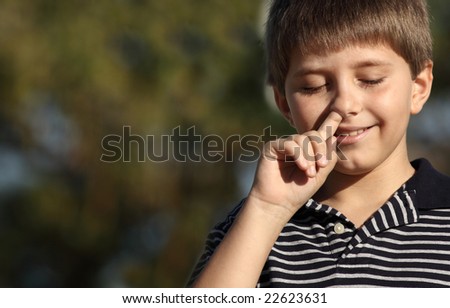- What is the narrator hearing at the end of the story? Remember that the narrator is unreliable - what do you think he is in fact hearing?
- What are two controlling symbols in the story? What might they represent?
- Are there any other symbols in the text? (Yes, this is a leading question J)
- Give examples of how Poe creates suspense in the story.
- Which of Todorov's categories does this text belong to in your opinion? (the Marvelous, the Fantastic, the Uncanny)
- What is the main theme of this text?
tirsdag den 22. januar 2013
The Tell Tale Heart, Part Two
Answer questions in groups. We will sum up in class.
fredag den 11. januar 2013
Christian, Tina
 |
| In this picture, the Boogeyman is reaching his victum. The long claws of the shadow is getting dangerously close to the child, who is helplessly asleep. |
Line p, Vicky

Child murder is pretty obvious in this case, because the story is about a father who kills his three children.

Mental disease
The father of the three children is suffering from a mental disease, and tells his story to a psychiatrist.
The father tells the psychiatrist that it is a boogeyman that killed his children, but the reality is that he did it himself and that tells us that maybe is suffering from a split personality.
At first it seems like that the story belongs to Todorov's categorie the Fantastic because we accept that the monster is a "real" thing, but as we keep reading we realize that the father is suffering from a mental disease and that the boogeyman is in his imagination, and the story ends under the categori The Uncanny.
Philip- Jesper
- This picture relates to the boogeyman theme:
- Here we see a shadow that makes the illusion of some supernatural creature, going up stairs towards the dark closet.
- The way this shadow reminds us of the boogeyman, is when you focus on it`s claws and it`s abnormal body shape. We also se the monster indirectly, which indicate the genre of horror.
- This picture inspires the readers imagination to work on his own. This also indicate that this genre is horror.
- Is this a dream? or just bad running out of control? This is how the horror genre works, as we see in the story, where it is hard to the protagonist to see whats dream or reality.
Lene, Rune, Martin
 |
| This picture illustrates the children from the Boogeyman followed by the death(dad) |
 |
| This creates a perfect image of what the children in the story Boogeyman has seen. |
Henrik
 |
| Face it or him. |
Morten P. & Jakob
Line S, Luna, Jeanette
 | |
| The Boogeyman is killing |
The picture
is illustrated how the boogeyman is killing the child with his claws. It is described
in the second killing, when the girl Shirl is mention that she sees the boogeyman’s
claws. P. 5. L. 10-11.
 |
|
Schizophrenia
|
This
picture illustrated the two personalities we think Lester Billings have. He
starts with saying that he has killed his children and he seems like a normal
man. P. 1. L. 11-12. Later in the text he mentions the boogeyman, and now it is
the boogeyman that kills Lester Billings children. P. 5. L. 2.
Alex - Villy
 |
| The Boogeyman's claw!!we read that the boogeyman has claws, and we think that they must look like this.
- Horror ->
|
 |
| The Real Boogeyman!!this is our interpentaiton of the real boogeyman from the story.
- Horror -> "it had to hunt around, slinking through the streets at night and maybe creeping in the sewers. Smelling for us." we're getting a picture of how the boogeyman looks like. and that reference to horror.
|
 |
| in the way it relates to the story is that boogeyman can mean boogey from the nose or boogeyman in the closet. |
Jan
mandag den 7. januar 2013
The Boogeyman: Illustration assignment
Find 1-3 pictures that can function as illustration(s) to one or more of the story's themes. Find inspiration in the themes we discussed in class Thursday 10 January.
Each picture must be followed by a detailed explanation of how and why the picture is a good illustration to the story's theme.
Write your names in the title and give the post the label (etikette) 'The Boogeyman'.
Each picture must be followed by a detailed explanation of how and why the picture is a good illustration to the story's theme.
Write your names in the title and give the post the label (etikette) 'The Boogeyman'.
Abonner på:
Opslag (Atom)






